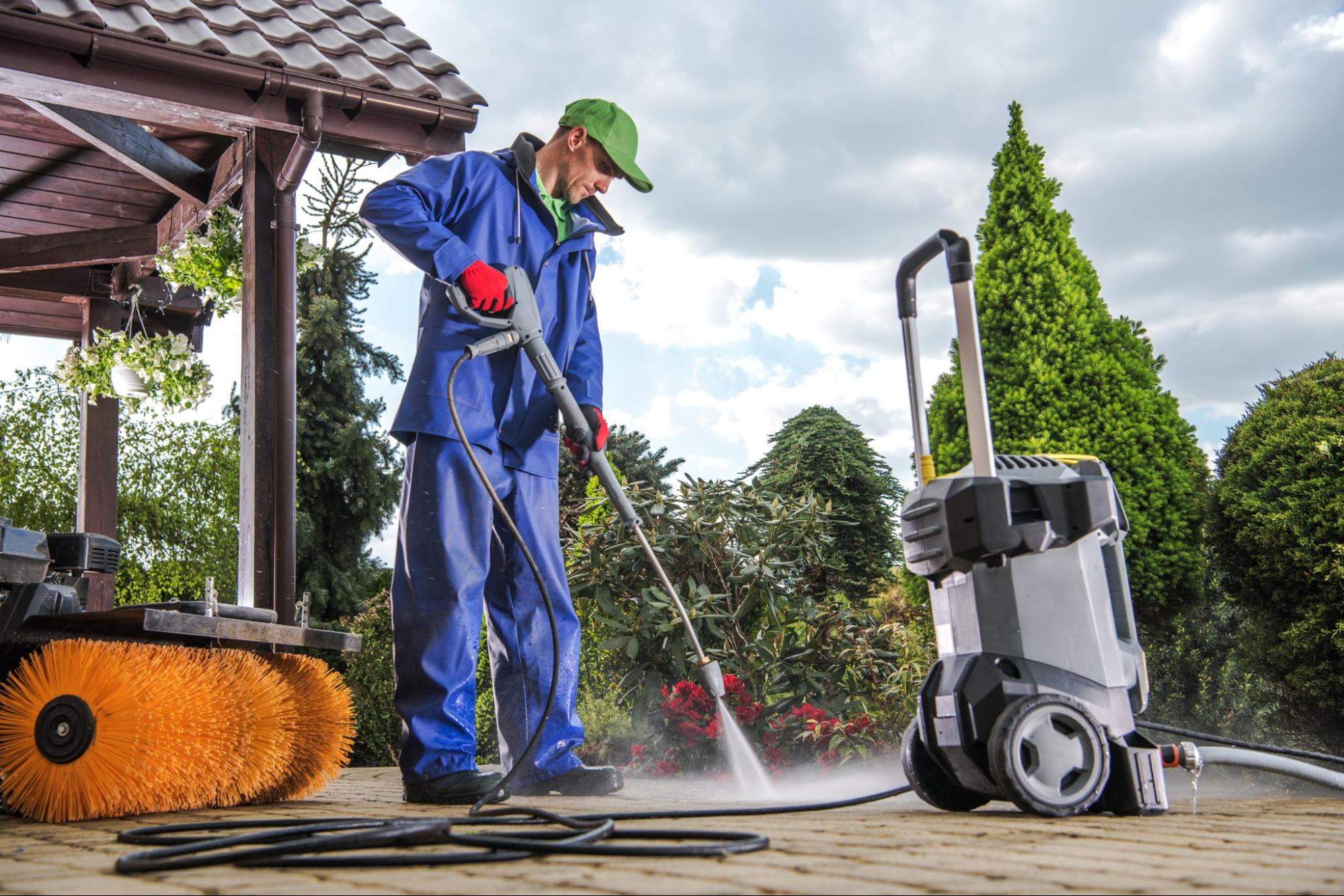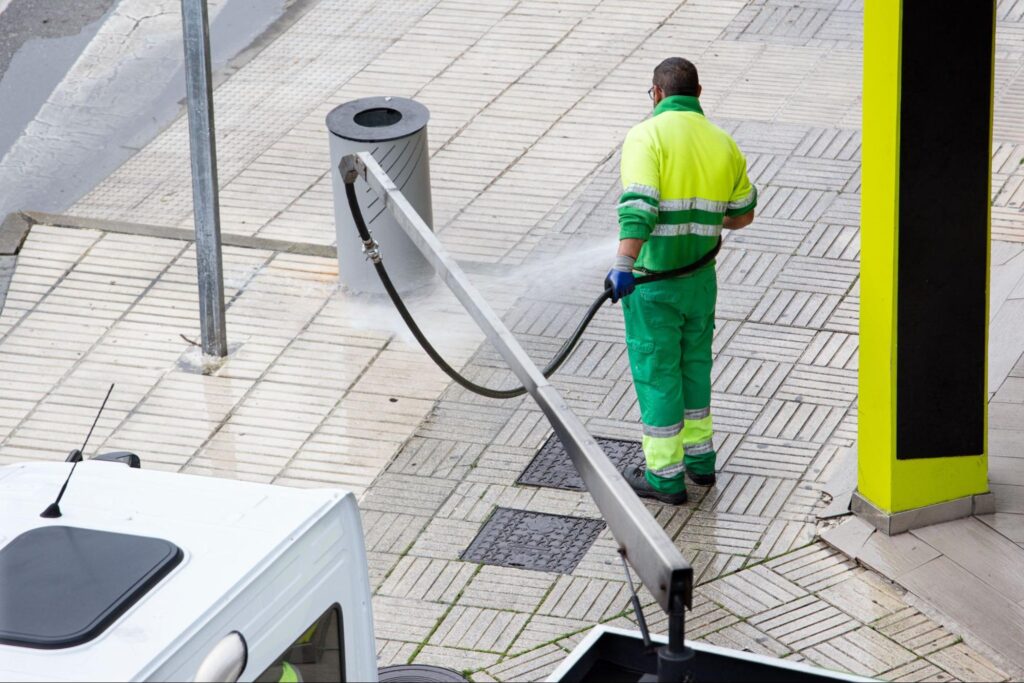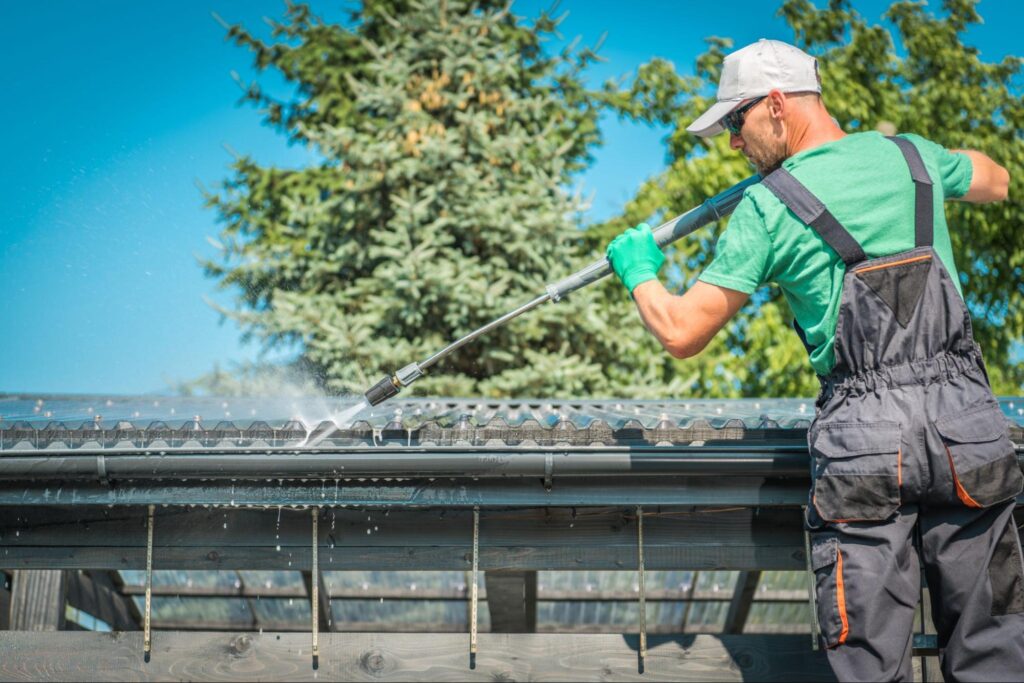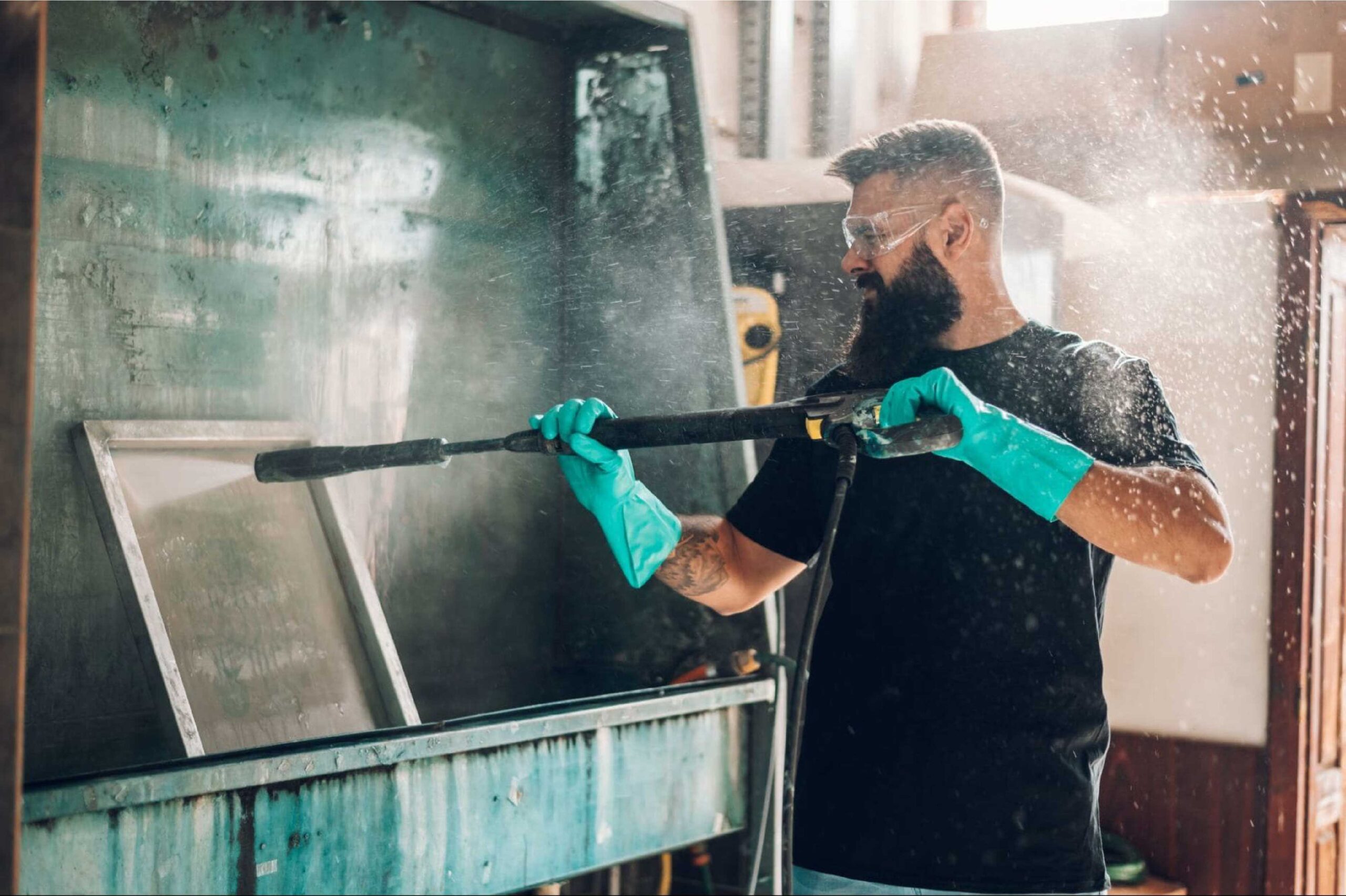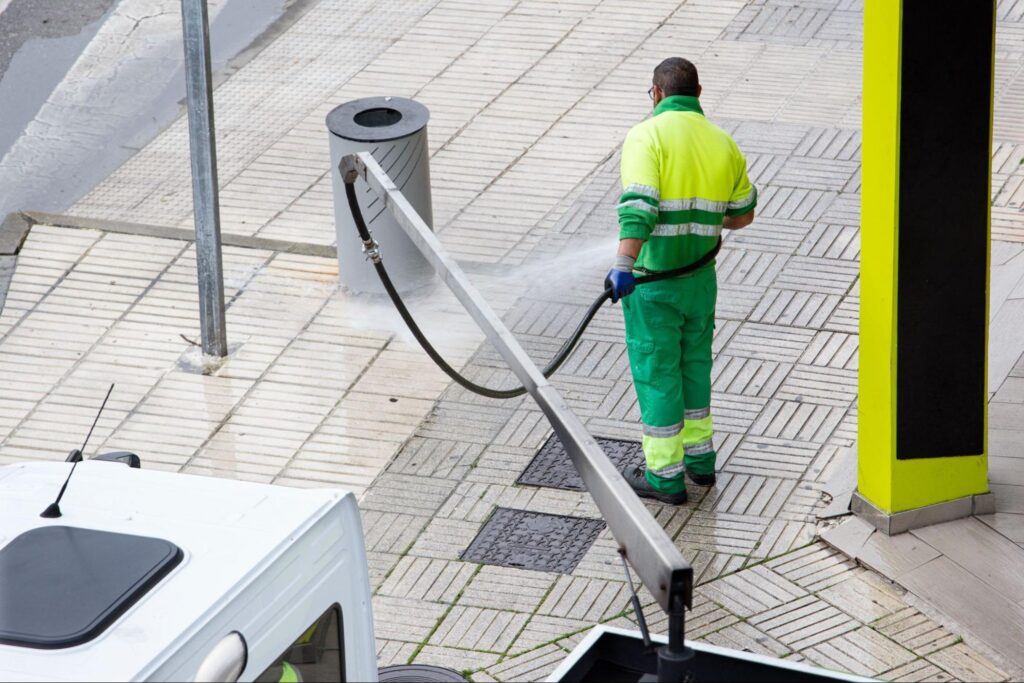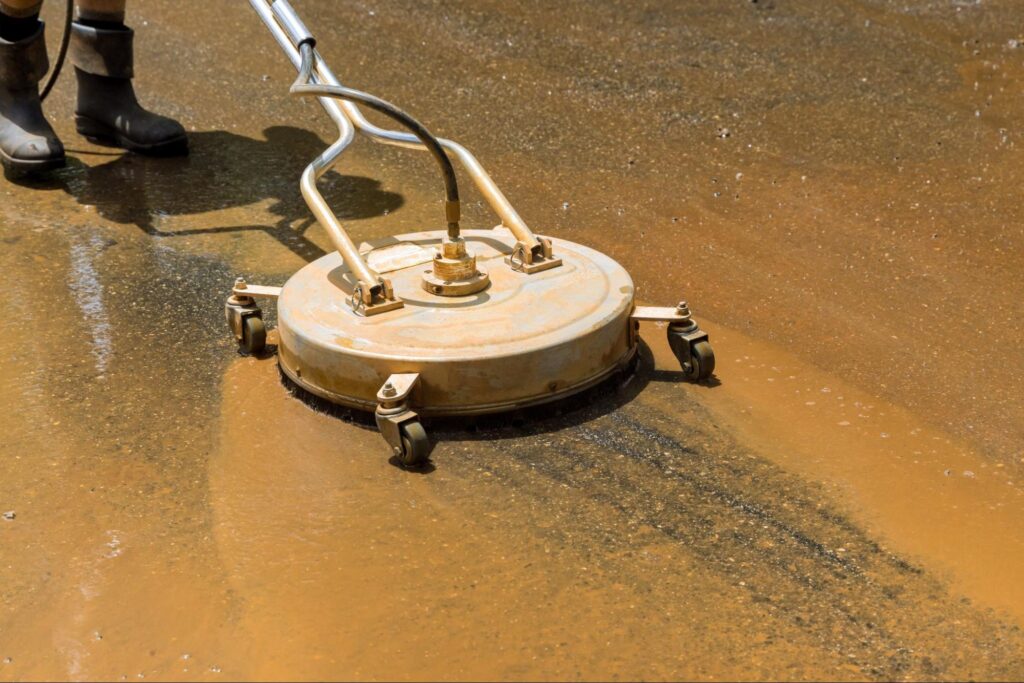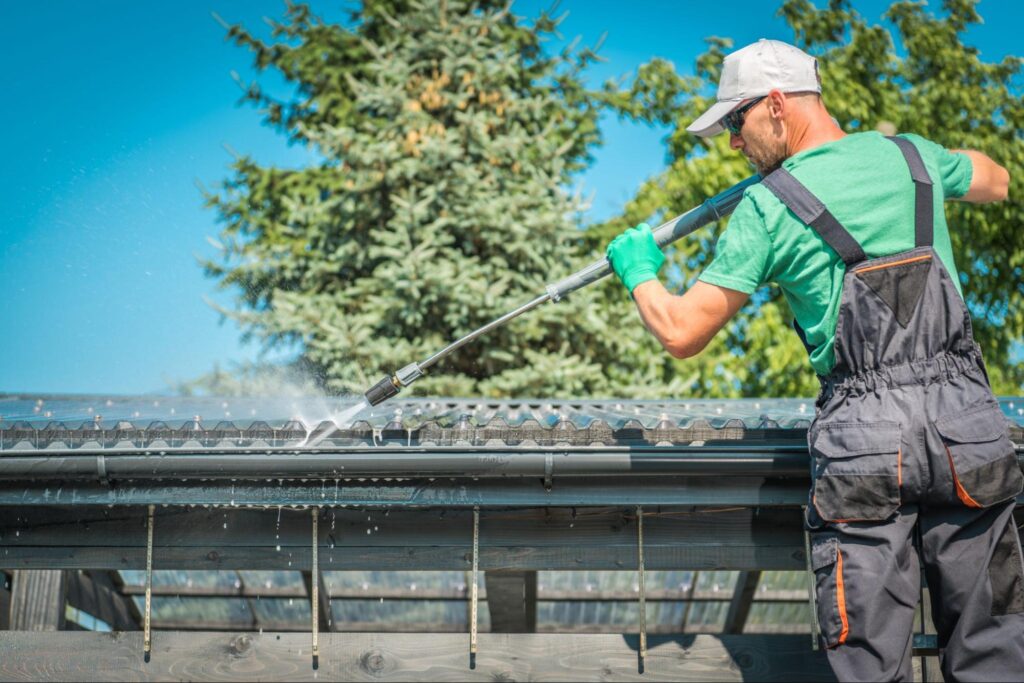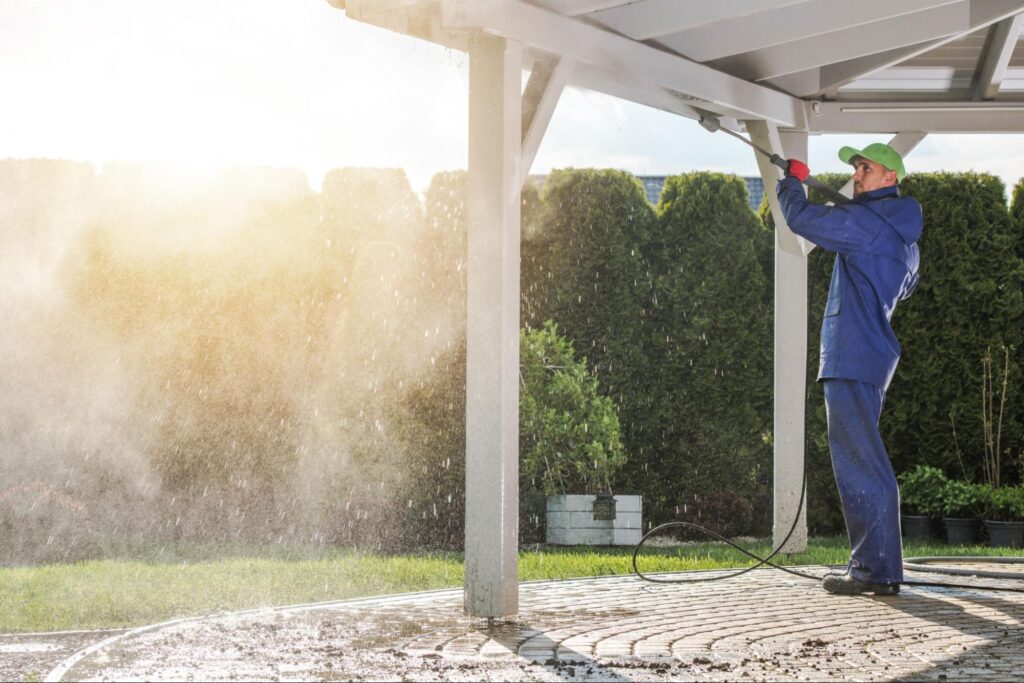How Modern Technology Improves Pressure Washing Equipment Performance

Modern technology has changed how cleaning professionals operate in residential and industrial settings. Machines once limited to water pressure now feature smart systems that enhance power, precision, and safety. Every new advancement allows users to clean faster, consume less energy, and deliver spotless surfaces. Digital innovation and mechanical engineering combine to set new performance standards for pressure washing equipment.
The Evolution of Pressure Washing Equipment
Pressure washing equipment has evolved from manual cleaning tools into advanced, high-performance machines designed for modern use. Early versions relied heavily on manual effort, but newer systems blend automation, power efficiency, and precision. The evolution has also focused on user comfort, energy efficiency, and sustainability. Each phase of progress reflects the cleaning industry’s growing demand for speed, accuracy, and dependability.
From Manual Cleaning to Mechanized Systems
Manual cleaning once demanded long hours and physical labor, offering inconsistent results. Implementing mechanized systems revolutionized surface cleaning through pressurized water that efficiently removed dirt and stains. Operators no longer need harsh chemicals or constant scrubbing to achieve professional results, marking the transition from physical exertion to mechanical assistance. As machines became more accessible, industries quickly adopted them to handle more demanding cleaning jobs efficiently.
The Rise of Smart and Efficient Machines
Smart features began reshaping how operators interacted with pressure washers. Modern machines now include sensors, variable pressure settings, and automatic shut-offs for safety. Digital interfaces precisely control temperature, pressure, and flow, ensuring the best results for every surface type. Additionally, new systems reduce energy waste by optimizing performance during each cycle. These intelligent functions make cleaning faster, safer, and more environmentally responsible.
Engineering Innovations in Pressure Washing Equipment
Technological progress has refined every part of pressure washing machinery, from motors to nozzles. Engineers focus on balancing raw cleaning power with smooth operation and reduced energy use. Modern designs are built for consistent performance across all environments, improving reliability and lifespan. The outcome is equipment that delivers professional-grade cleaning with minimal maintenance requirements.
High-Efficiency Motors and Pump Systems
High-efficiency motors now produce stronger, steadier power with reduced energy draw. Pumps are engineered with improved seals and bearings that extend service life and minimize internal friction. Operators benefit from smoother water flow and consistent pressure, even during extended use. Additionally, quieter motors reduce workplace noise and vibration, increasing operator comfort. These upgrades improve daily operations while lowering long-term ownership costs.
Advanced Nozzle and Spray Technology
Modern nozzles are precision-engineered for controlled cleaning power and water efficiency. Adjustable nozzles let users switch between gentle rinses and concentrated sprays with one motion. Rotating and fan-style nozzles combine coverage with power, cutting cleaning time without wasting water. Similarly, design improvements help maintain steady pressure regardless of surface type. This technology ensures efficient cleaning while protecting delicate materials.
Improved Heat and Pressure Control Systems
Modern heating systems quickly raise water temperature while conserving fuel. Digital sensors continuously monitor and adjust pressure to maintain a consistent cleaning force. These mechanisms reduce stress on equipment and protect against overheating. Additionally, users can fine-tune temperature and flow to match surface conditions. These updates give operators more control, reliability, and energy savings during extended use.
Smart Technology Integration in Pressure Washing Equipment
Smart technology has turned pressure washing into a connected, data-driven process. Machines now communicate, track, and adjust themselves for optimal performance. Sensors and software work together to improve efficiency and extend equipment lifespan. This integration creates a cleaning process that is both intuitive and highly productive.
IoT Connectivity and Remote Monitoring
Internet-connected washers let operators monitor performance through mobile apps or control dashboards. Real-time data on pressure, temperature, and flow provides instant operational insights. Remote diagnostics detect issues before they cause downtime, improving system reliability. Additionally, service teams can schedule maintenance more accurately using recorded machine data. This level of connectivity streamlines management for both small and large operations.
Automated Pressure Controls and Smart Sensors
Smart sensors automatically adjust water pressure and temperature based on the cleaning surface. These pressure transducers eliminate guesswork and ensure consistent and safe cleaning every time. Built-in algorithms detect dirt levels and adjust settings for efficiency. These intelligent adjustments help reduce energy and water use while preventing surface damage. Automation gives operators complete control without manual recalibration.
User-Friendly Digital Interfaces
Touch-screen controls have replaced mechanical switches in most professional-grade machines. Operators can easily view performance metrics, maintenance alerts, and cleaning presets. These systems simplify training for new users and improve overall safety. Additionally, they record data for performance tracking and predictive maintenance. Easy-to-use interfaces make high-end pressure washers more accessible and dependable.
How Technology Improves Water Delivery and Performance
Technology has changed how pressure washing systems manage water flow and power. More innovative pumps, precise sensors, and optimized delivery systems ensure consistent cleaning force with less waste. These innovations enhance performance, conserve resources, and extend equipment life. How water is delivered defines how effectively modern machines clean, making it central to every new advancement in pressure washing technology.
Energy Efficiency and Environmental Innovations
Modern pressure washing systems focus on conserving energy and water without compromising performance. Manufacturers integrate eco-friendly features to support sustainability goals and cost reduction. These machines help businesses meet environmental standards while improving profitability. Each upgrade aims to deliver stronger cleaning with fewer resources.
Energy-Saving Motors and Eco Modes
New pressure washers use electric or hybrid power systems that consume less energy. Eco modes automatically regulate output to meet cleaning needs efficiently, helping reduce electricity or fuel usage during lighter cleaning tasks. Additionally, improved pump designs eliminate unnecessary power loss. These systems save money while supporting environmental responsibility.
Water Recycling and Filtration Systems
Water recovery systems capture and filter used water for reuse. Filtration removes dirt, oil, and residues before the water reenters the cleaning cycle. This method reduces total consumption, which benefits both cost and sustainability. Large commercial operations see the most significant savings from water reuse technology. Clean, recycled water ensures strong performance while meeting environmental regulations.
Smart Detergent Control Systems
Modern detergent injectors automatically regulate soap or chemical flow for precise cleaning. These systems maintain balanced mixtures, preventing waste or overuse. Controlled chemical application delivers consistent cleaning results while protecting surfaces. Additionally, it limits runoff pollution, supporting eco-friendly practices. This combination of automation and control enhances performance while maintaining compliance.
Durability, Safety, and Easy Maintenance
Technological innovation has made pressure washers more resilient and user-friendly than ever. Machines now last longer, handle harsher conditions, and provide better operator protection. Simplified maintenance ensures uptime and long-term savings. Each design update focuses on practicality, performance, and safety for all cleaning environments.
Heavy-Duty Materials and Frame Design
New materials like stainless steel, reinforced polymers, and coated alloys resist corrosion and impact damage. These components hold up under constant vibration and temperature shifts. Reinforced hoses and fittings reduce leaks, extending operational life. Similarly, internal seals prevent water intrusion, keeping electrical systems safe. Built to endure demanding workloads, modern machines outlast earlier models with less upkeep.
Safety Systems and Operator Protection
Safety has improved with built-in shut-offs, thermal guards, and leak detectors. Sensors stop operation instantly when unsafe conditions occur, preventing damage and injury. Temperature control prevents overheating during continuous use. Additionally, ergonomic handles and reduced vibration improve user comfort. These features make industrial-grade cleaning safer and more dependable.
Simplified Service and Maintenance Access
Modern machines feature removable panels and modular designs for easy repairs. Quick-access components reduce downtime during servicing or inspection. Smart displays notify operators of maintenance schedules based on real-time data. This proactive approach prevents costly breakdowns. Streamlined maintenance ensures reliability and higher equipment availability.
Data-Driven Optimization and Predictive Maintenance
Data analytics now guide pressure washing system performance, maintenance, and long-term efficiency. Sensors and software continuously analyze conditions and suggest adjustments. These insights allow businesses to plan repairs before issues arise. The result is consistent performance and extended equipment lifespan.
Predictive Analytics for Maintenance Planning
Data from pressure, temperature, and vibration sensors indicate wear trends. Software algorithms use this data to predict maintenance needs before failures occur. Technicians receive alerts, helping them schedule timely interventions. These notifications prevent unplanned downtime and extend service intervals. Predictive maintenance ensures continuous operation and reduced repair costs.
Custom Cleaning Programs and Automation
Operators can preset cleaning modes tailored to different surfaces or contaminants. Once activated, the machine automatically adjusts pressure, temperature, and detergent flow. This automation delivers consistent, repeatable cleaning results and simplifies workflow in commercial operations requiring uniform standards. Over time, customizable programs increase efficiency and reduce training demands.
The Role of Technology in Commercial Cleaning
Commercial and industrial operations depend on robust cleaning systems that deliver steady results. Innovative technology has improved reliability, productivity, and operational cost efficiency. These systems can manage large-scale cleaning without losing performance consistency. Businesses now achieve better results with fewer resources and less supervision.
Greater Productivity and Reduced Downtime
Automated systems minimize downtime through self-diagnostics and efficient performance tracking. Crews complete more work in less time due to improved reliability. Remote access tools allow managers to oversee equipment usage across multiple sites. Additionally, predictive alerts reduce maintenance interruptions. Higher uptime directly supports better productivity and customer satisfaction.
Lower Operating Costs and Higher ROI
Energy savings, reduced water waste, and predictive maintenance all lower operational expenses. Smart washers require fewer repairs and replacements than older models. Businesses quickly recover investment costs through improved performance and resource efficiency. Additionally, consistent results strengthen brand reputation and client trust. Over time, these machines become essential assets for professional cleaning services.
Future Innovations in Pressure Washing Equipment
Emerging technologies promise improvements in cleaning power, efficiency, and environmental responsibility. Manufacturers continue developing systems that adapt to changing demands in real time. Next-generation pressure washers will redefine cleaning precision as artificial intelligence and clean energy evolve. These future trends highlight the ongoing fusion of performance and sustainability.
Artificial Intelligence and Learning Systems
AI-driven equipment learns from repeated cleaning patterns to improve over time. Machines detect surface materials and adjust settings for optimal performance. These learning systems reduce operator error and energy waste. Additionally, AI enhances data tracking for long-term analysis. Such innovation ensures smarter, safer, and more efficient cleaning processes.
Sustainable Power and Eco-Friendly Design
Future washers will rely on battery, hybrid, or solar energy systems. Lightweight materials and biodegradable detergents will further reduce environmental impact. Engineers aim to eliminate fuel use while maintaining cleaning strength. Similarly, low-noise designs make operation suitable for residential zones. These upgrades combine strong cleaning capability with environmental responsibility.
Advancing Business Success With Modern Pressure Washing
Technology is now central to maintaining a competitive edge in the cleaning industry. Businesses that invest in advanced pressure washing equipment gain reliability, efficiency, and sustainability advantages. These innovations directly influence service quality and customer satisfaction. With modern tools, the cleaning process becomes faster, cleaner, and more profitable.
Adopting Modern Technology for Better Performance
Upgrading to advanced machines allows cleaning companies to handle complex jobs confidently. Smart controls and durable construction improve consistency across projects. These upgrades enhance safety, reduce labor fatigue, and raise productivity. Additionally, companies gain credibility with eco-conscious clients seeking sustainable services. Adopting new systems means staying relevant in an increasingly tech-driven market.
Building Sustainable Growth and Client Trust
Sustainable equipment supports long-term business growth by cutting costs and improving outcomes. Predictive systems help maintain reliability while reducing waste. Clients recognize consistent results as a sign of professionalism and trustworthiness. As performance improves, businesses benefit from higher retention and referral rates. The future of cleaning belongs to companies ready to adapt and innovate today.
Redefine Cleaning With Advanced Pressure Washing Equipment
Modern technology has turned cleaning into a precise, data-driven process that saves time and resources. Upgrading to advanced pressure washing equipment means operating smarter, achieving cleaner results, and building long-term value. Every innovation adds measurable strength to your workflow and reputation. Step into a new era of efficiency and let technology work as hard as you do.
Go beyond clean—learn the science and strategy behind modern pressure washing on the A Plus Power Cleaning blog, where performance meets precision.
Recent Post
-
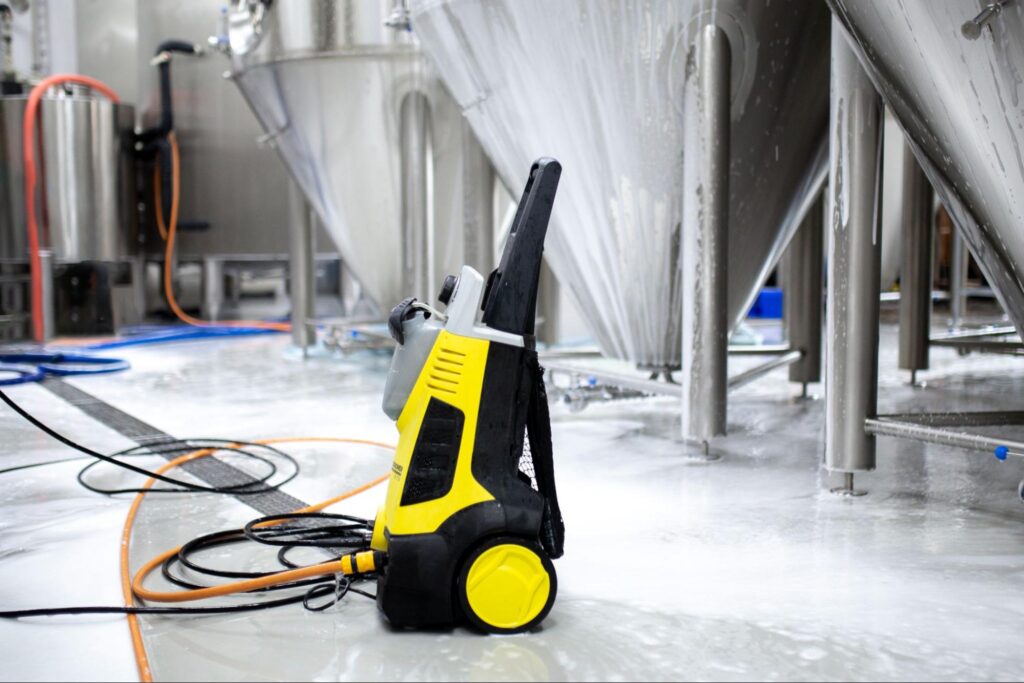 How Modern Technology Improves Pressure Washing Equipment Performance
How Modern Technology Improves Pressure Washing Equipment Performance -
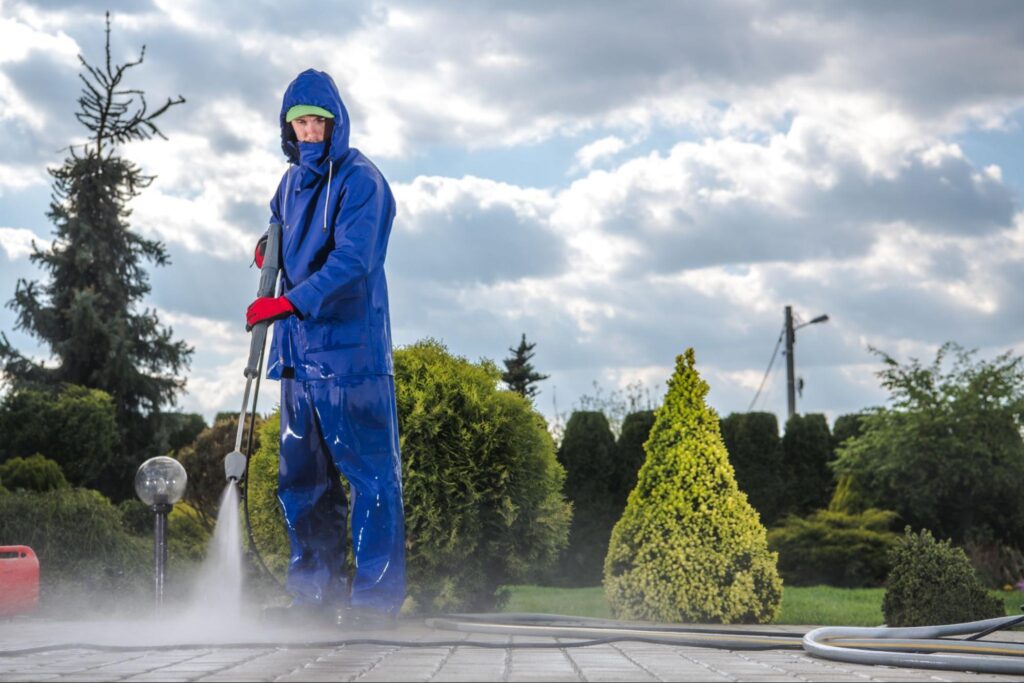 What to Expect When You Call a Pressure Wash Business
What to Expect When You Call a Pressure Wash Business -
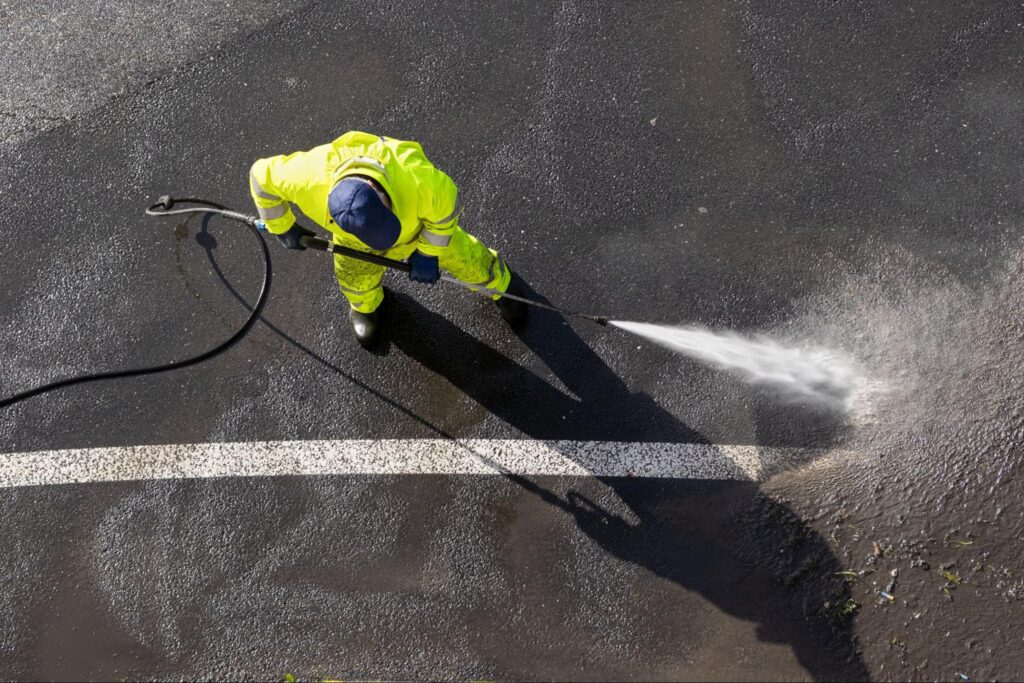 The Step-by-Step Process of Professional Parking Lot Cleaning
The Step-by-Step Process of Professional Parking Lot Cleaning -
How a Commercial Surface Cleaner Helps Maintain Sidewalks and Parking Lots
-
Why More Homeowners Rely on Pool Water Delivery Services
-
How a Gutter Cleaner Helps Protect Roofs and Foundations
-
The Difference Between DIY and Professional Pressure Wash Services
-
What Pressure Washer Companies Do and Why You Need Them
-
Pressure Washing vs. Soft Washing: Which Is Right for Your House?
-
Top Industries That Rely on Industrial Pressure Washing
-
The Benefits of Using a Pressure Washer for House Exteriors
-
The Difference Between Residential and Commercial Pressure Washing
-
What Is a Pressure Washer Surface Cleaner and How Does It Work?
-
The Importance of Regular Gutter Cleaning for Home Maintenance
-
How Weather Conditions Affect High Rise Window Cleaning
-
What Pressure Washing Equipment is Needed for Residential Spaces?
-
What Pressure Washing Equipment is Needed for Residential Spaces?
-
Best Times for Driveway Pressure Washing
-
Pressure Wash vs. Power Wash: What's the Difference?
-
How Often Should You Invest in Roof Gutter Cleaning?
-
Best Pressure Washing Company Near Me in Austell, GA
-
Top Power Wash Company Near Me in Chamblee, GA
-
Top Powerwash Company Near Me in Atlanta, GA
-
Top Pressure Cleaning Companies Near Me Austell, GA: A Plus Power Cleaning
-
Top Pressure Washing Companies Near Me Chamblee, GA: A Plus Power Cleaning
-
Top Pressure Cleaning Companies Near Me Atlanta, GA: A Guide to Power Cleaning Services
-
Best Electric Pressure Washer in Atlanta
-
How Much Does Roof Cleaning Cost in Marietta, GA and Atlanta, GA?
-
How Much Does Pressure Washing Cost in Georgia?
-
What is the Difference Between Power Washing and Pressure Washing
-
What Is Soft Wash Roof Cleaning
-
The Best Way to Use a Pressure Washer Surface Cleaner
-
Gutter Cleaning Services
-
Exterior House Cleaning in Roswell, GA



